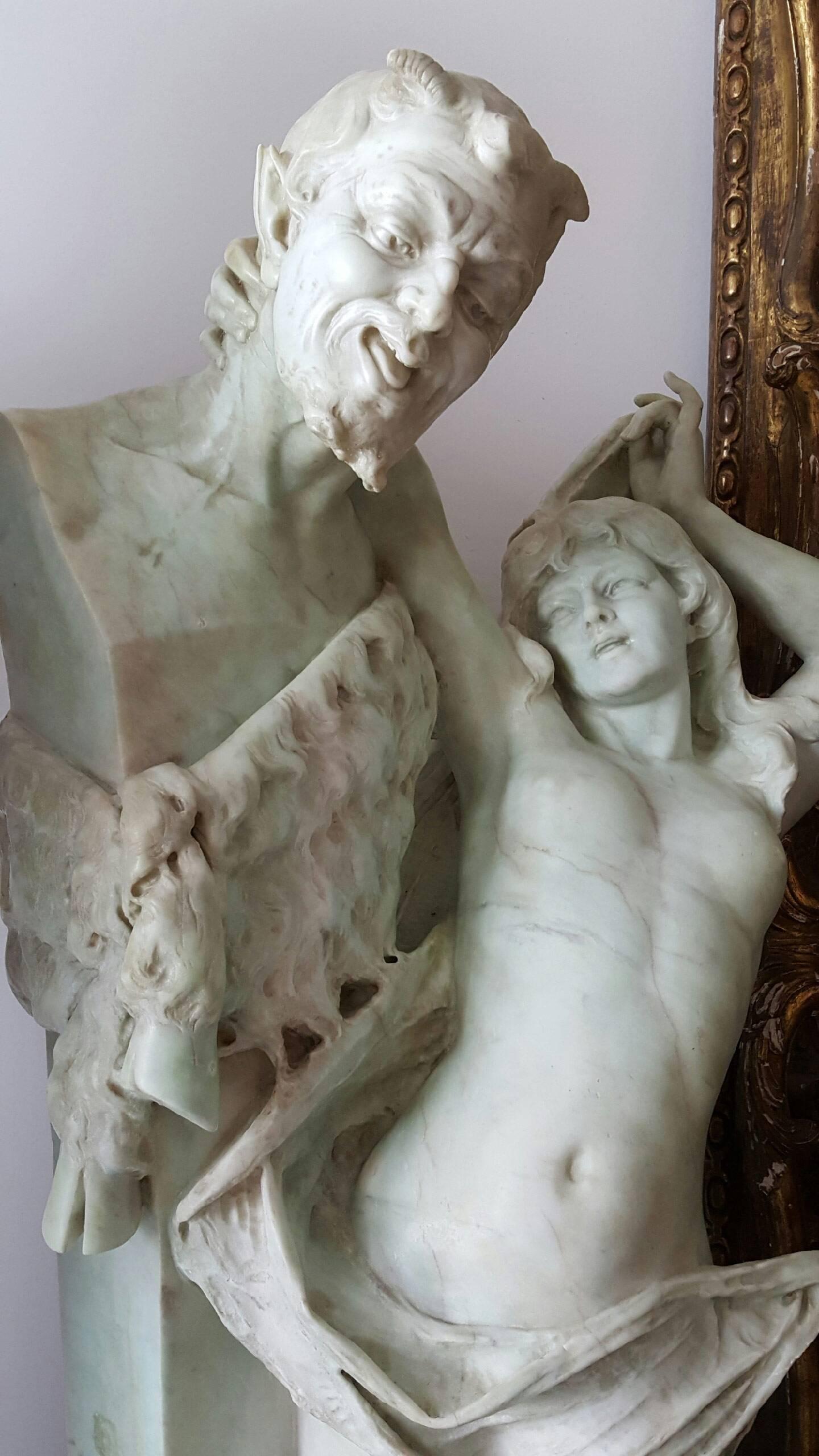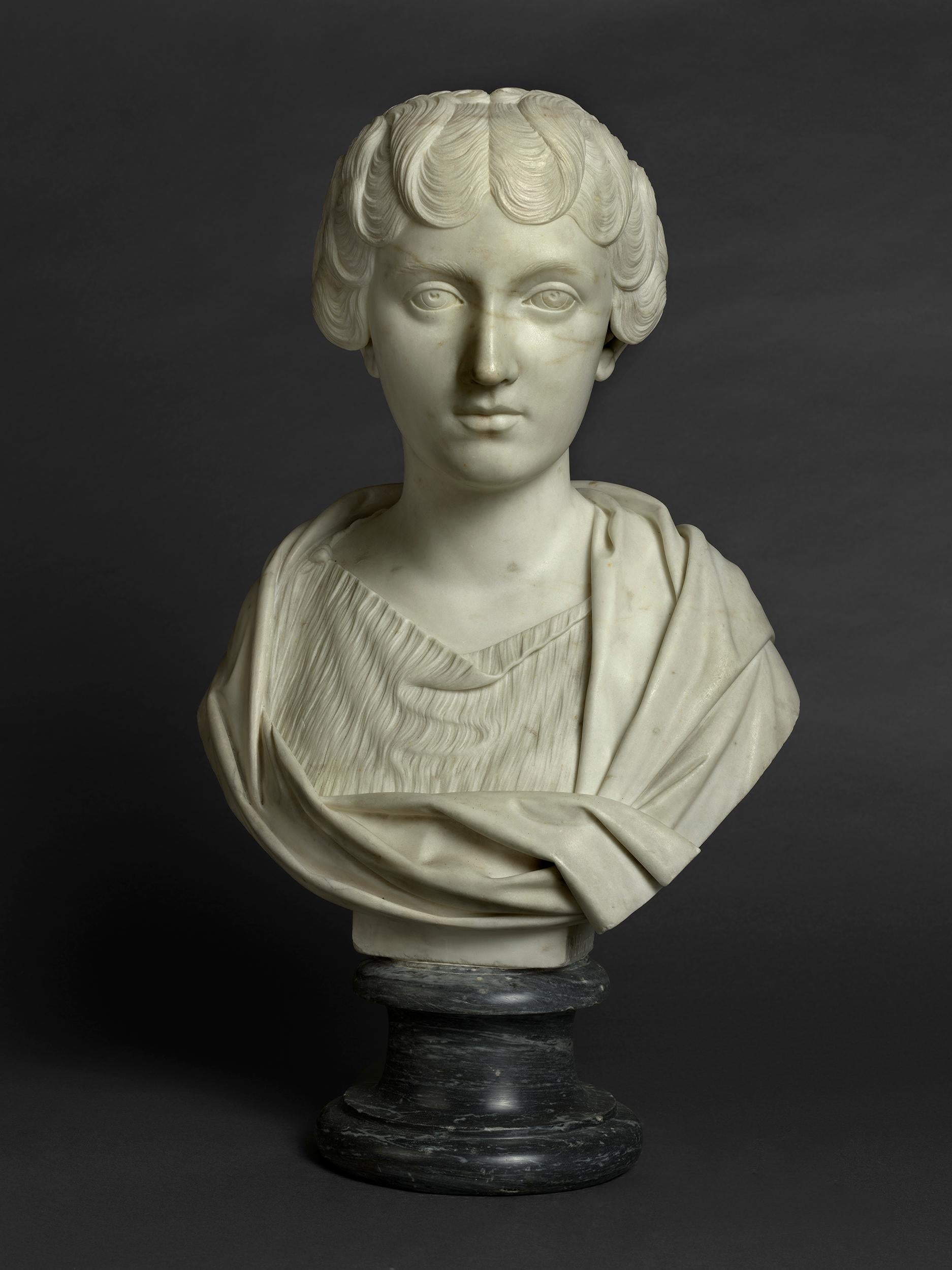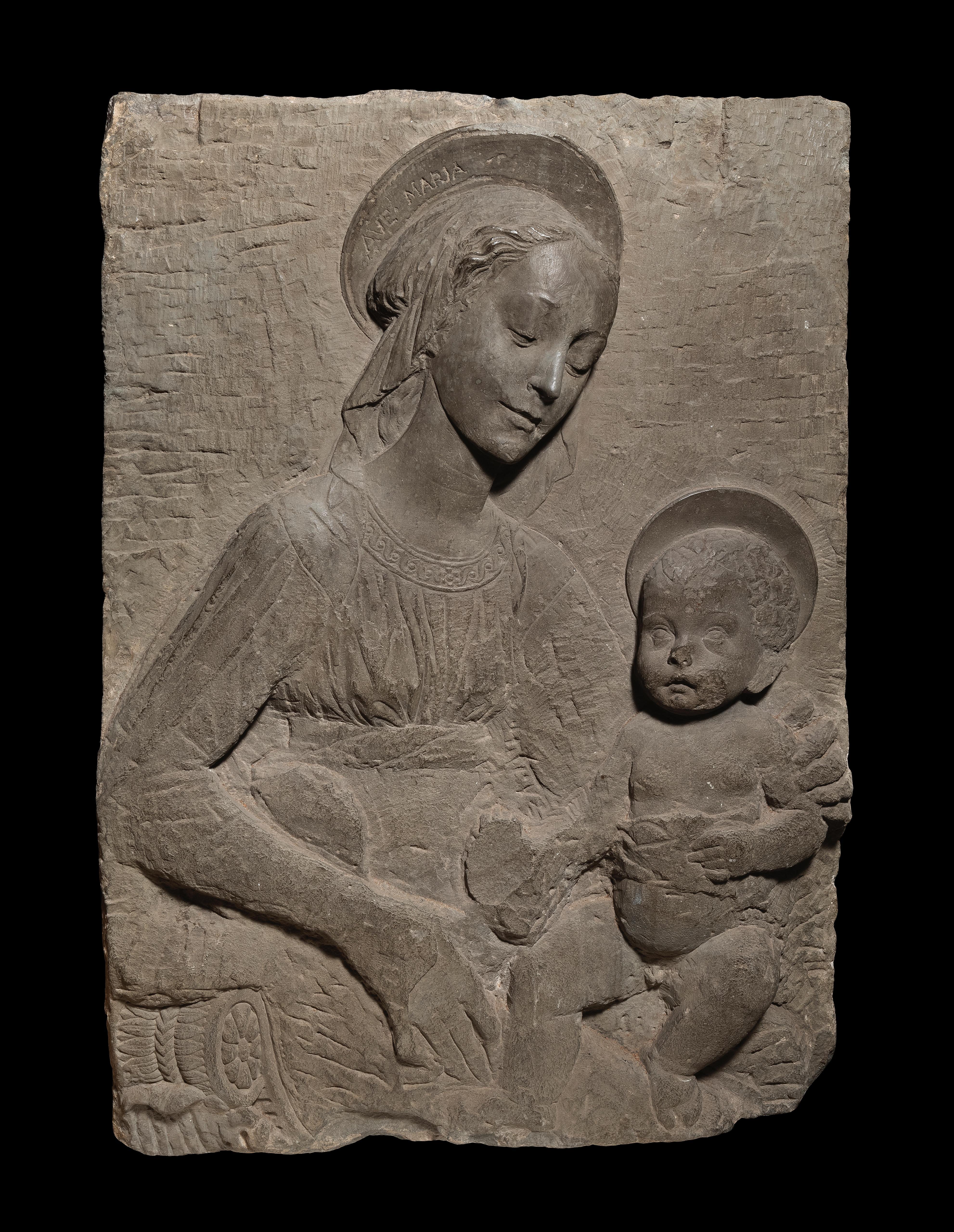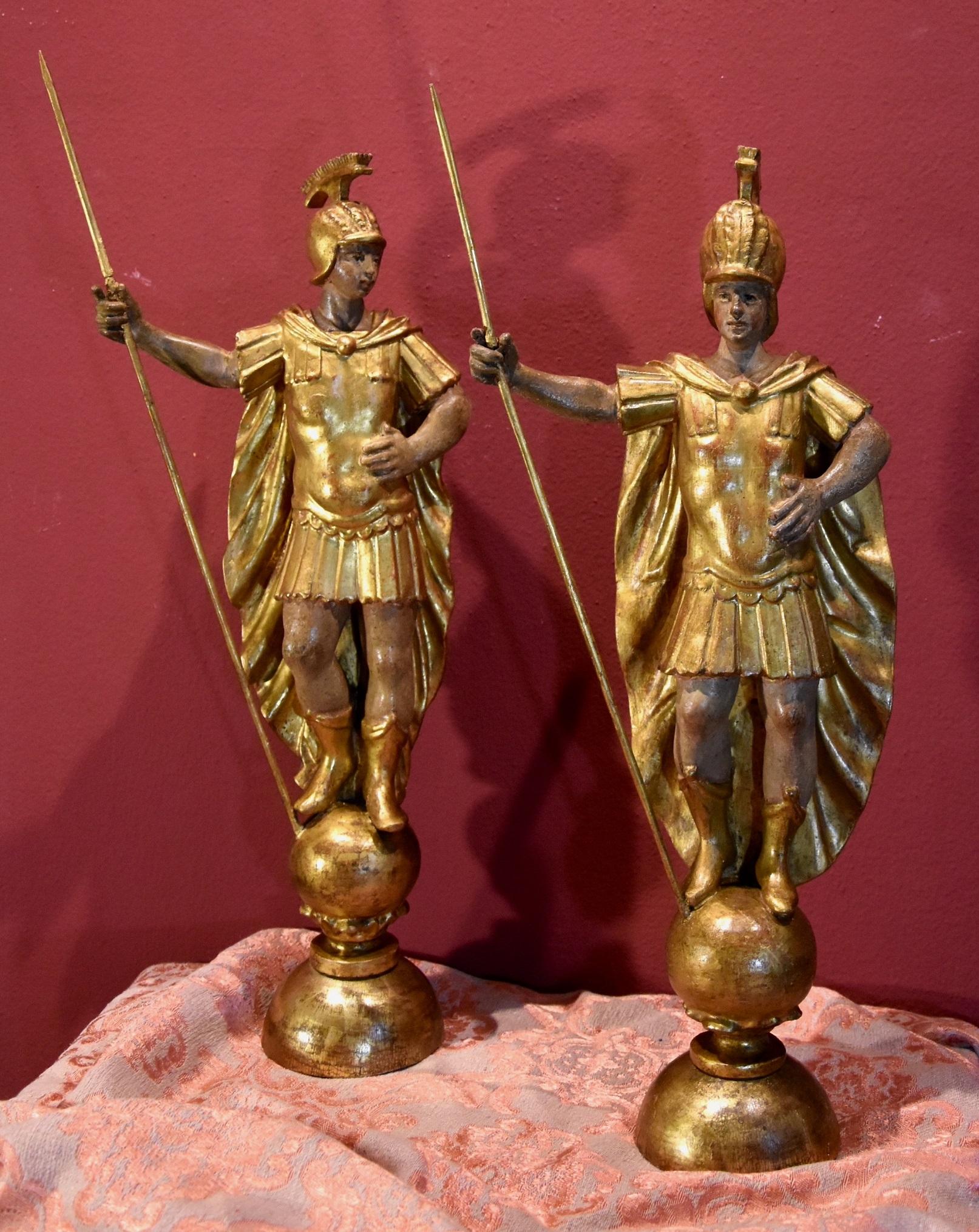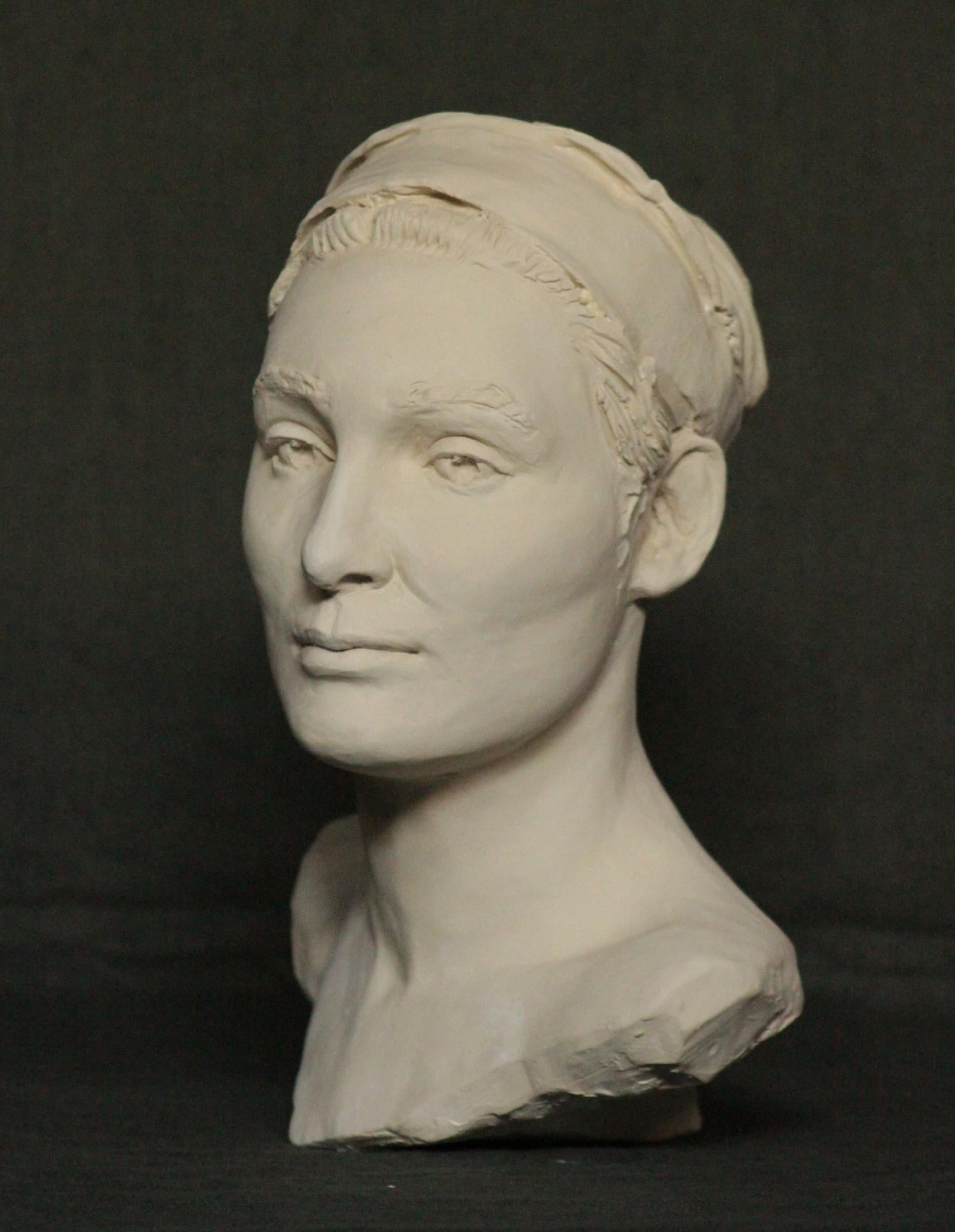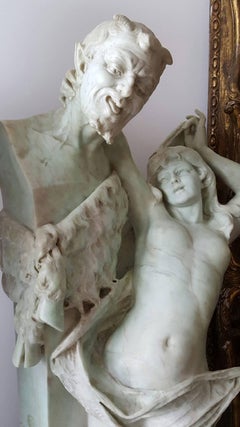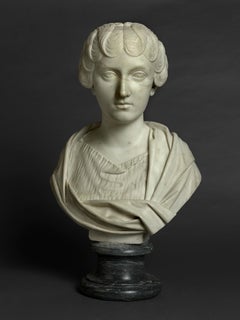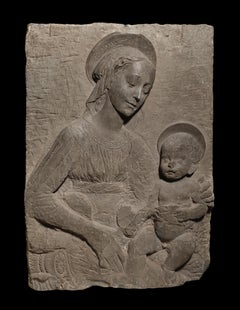Items Similar to Large White Marble Head of Alexander the Great Rome 17th century Sculpture
Video Loading
Want more images or videos?
Request additional images or videos from the seller
1 of 16
UnknownLarge White Marble Head of Alexander the Great Rome 17th century Sculptureabout 1660
about 1660
About the Item
Bellissima e imponente testa neoclassica in marmo di Alessandro Magno, Italia, Roma, XVII secolo.
Fine Arts export certificate available.
Alexander the Great (356-323 B.C.), who enjoys great posterity throughout history, cultures and religions, was the subject of numerous works of art from Antiquity to the present day, making him one of the major political figures in Western art. Most contemporary or original works have disappeared, although many copies were made in Roman times, especially in the field of sculpture; In the 17th and 18th centuries, Alexander inspired sculptors who were part of classicism.
The head, slightly larger than life-size, shows a definite lateral and backward twist in a typical heroic stance. The face, with strong but regular features and an open mouth, is crowned by thick hair with locks that, on the forehead, are arranged in an upward movement (anastole) characteristic of portraits of Alexander the Great.
It was the sculptor Lysippus who, in creating the portrait of Alexander the Great, transformed the physical defect that required the leader, according to the sources, to hold his head sharply tilted over one shoulder into an upward facing attitude that seems to allude to a certain rapture. celestial, "a silent conversation with divinity."
The fine modeling should derive from one of the many portraits of Alexander the Great, of the Acropolis Museum type (Young Alexander) or more reliably of the Pergamon type. Our head dates from the second half of the seventeenth century, and this is no coincidence: seventeenth-century Europe was rich in collections of archaeological relics and marble sculpture, particularly from the Roman but also Hellenic periods, which evoked, in the ideal of the noble classes, a refined and idealized taste for antiquity that pushed toward a reproduction but also a reworking of the classical style.
- Creation Year:about 1660
- Dimensions:Height: 13 in (33 cm)Width: 9.45 in (24 cm)Depth: 10.63 in (27 cm)
- Medium:
- Movement & Style:
- Period:1660-1669
- Condition:La testa presenta segni di usura dovuti agli agenti esterni ma è solida e, anche se ci sono delle mancanze, non ha fratture o rotture. The head is accompanied by Italian Fine Arts export certficate and can be shipped immediately.
- Gallery Location:Pistoia, IT
- Reference Number:1stDibs: LU2746215883412
About the Seller
4.5
Vetted Professional Seller
Every seller passes strict standards for authenticity and reliability
Established in 1997
1stDibs seller since 2024
11 sales on 1stDibs
Typical response time: <1 hour
- ShippingRetrieving quote...Shipping from: PISTOIA, Italy
- Return Policy
Authenticity Guarantee
In the unlikely event there’s an issue with an item’s authenticity, contact us within 1 year for a full refund. DetailsMoney-Back Guarantee
If your item is not as described, is damaged in transit, or does not arrive, contact us within 7 days for a full refund. Details24-Hour Cancellation
You have a 24-hour grace period in which to reconsider your purchase, with no questions asked.Vetted Professional Sellers
Our world-class sellers must adhere to strict standards for service and quality, maintaining the integrity of our listings.Price-Match Guarantee
If you find that a seller listed the same item for a lower price elsewhere, we’ll match it.Trusted Global Delivery
Our best-in-class carrier network provides specialized shipping options worldwide, including custom delivery.More From This Seller
View AllPair of Antique Yellow Marble Profiles Roman Empresses 17th Century
Located in Pistoia, IT
Pair of early 17th-century medallion profiles in antique yellow marble and onyx
Pair of medallions depicting Agrippina and Faustina, Rome, 17th century.
Ra...
Category
Early 17th Century Baroque Figurative Sculptures
Materials
Marble
"La Danza", Grande scultura in Marmo bianco di Carrara XIX secolo
By Antonio Giovanni Lanzirotti
Located in Pistoia, IT
Antonio-Giovanni Lanzirotti, "La Danza", grande scultura in marmo bianco di Carrara, firmata AG Lanzirotti sulla base.
Antonio Giovanni Lanzirotti, nato a Palermo il 9 maggio 1839 e...
Category
1860s Italian School Figurative Sculptures
Materials
Marble
Venus Colca Neoclassical Marble Sculpture early 19th century
Located in Pistoia, IT
Crouching Venus, neoclassical Carrara marble sculpture, early 19th century.
An 18th-century English tourist to Florence wrote that of all the Venuses in the Uffizi, "only one grace...
Category
Early 19th Century Italian School Figurative Sculptures
Materials
Marble
Large Neoclassical White Marble Sculpture Venus Italica mid-19th century
Located in Pistoia, IT
Venus Italica, imposing sculpture in white Carrara marble, mid-nineteenth-century Roman atelier.
Antonio Canova made several sculptures depicting Venus. The first was made as compen...
Category
Mid-19th Century Italian School Figurative Sculptures
Materials
Marble
Great Renaissance Serene Stone Sculpture of Greyhound Florence 16th century
Located in Pistoia, IT
16th-century Florentine sculptor, greyhound in pietra serena.
This fascinating sculpture, which has come down to us in fragmentary form, depicts a dog, an elegant greyhound crouching...
Category
16th Century Renaissance Figurative Sculptures
Materials
Stone
Italian Neoclassical Sculptural Group in Alabaster "The Rape of the Sabine Women" 18th
Located in Pistoia, IT
"The Rape of the Sabine Women," veined alabaster, large sculptural group with classical subject, Volterra manufacture, 18th century.
The so-called Rape of the Sabine Women is a scu...
Category
1790s Italian School Figurative Sculptures
Materials
Alabaster
You May Also Like
Erotic Sexual Mythological Marble Figural, Nude woman, Bacchante and Satyr Herm
Located in Miami, FL
Bacchic revelry. A sexy and nude curvaceous young Nymph/Bacchante makes amorous advances to a Herm - whose facial expression reflects her erotic touch. The Herm is stylized where his...
Category
Mid-19th Century Old Masters Nude Sculptures
Materials
Marble
$21,750 Sale Price
25% Off
Eighteenth-century Grand Tour marble bust of Faustina the Younger
Located in London, GB
Signed and dated: ‘F. Harwood Fecit 1764’
Collections:
Probably commissioned by Alexander Gordon, 4th Duke of Gordon (1743-1827);
Probably by descent at Gordon Castle, Banffshire to c.1948;
Possibly acquired by Bert Crowther of Syon Lodge, Middlesex;
Jacques Hollander (1940-2004);
Christie’s, 5 December 2013, lot 101;
Private collection;
Sotheby’s, 2 July 2019, lot 106
Literature:
John Preston Neale, Views of the seats of noblemen and gentlemen, in England, Wales and Scotland, London, 1822, vol.I, unpaginated.
This marble copy of an ancient bust in the Musei Capitolini usually identified as Faustina the Younger, the daughter of Antoninus Pius and future wife of Marcus Aurelius, was made in Florence by Francis Harwood in 1764. Harwood was one of the most prolific suppliers of decorative marbles for the Grand Tour market and this finely worked example demonstrates the quality of luxury goods available to travellers to Italy. So often anonymous, this unusually signed and dated example, raises questions about the status of marble copies in the period and of sculptors such as Harwood who are known principally for ornamental work.
Harwood’s origins remain obscure. He is documented living in Palazzo Zuccari with Joshua Reynolds and the Irish sculptor Simon Vierpyl at Easter 1752, he had certainly settled permanently in Florence by the following year, when he is recorded working with Joseph Wilton. He was admitted to the Florentine Academy on 12 January 1755 (as pittore Inglese, although he was described as scultore in the matriculation account). After Wilson returned to England in 1755 Harwood appears to have worked in a studio near SS. Annunziata with Giovanni Battista Piamontini who had made life-size copies of The Wrestlers and The Listening Slave for Joseph Leeson in 1754. In 1758 both sculptors were contracted to make a statue and a trophy to complete the decoration of the Porta San Gallo, Harwood completing a statue of Equality, installed the following year.
By 1760 Harwood was on the brink of his most productive period as a sculptor, producing copies of celebrated antiquities for the ever-increasing audience of Grand Tour travellers and for the domestic market in London. In 1761 Harwood met the young architect James Adam who was in Italy specifically to make contact with suppliers for Robert Adam’s burgeoning practice back in Britain. The Adams offered a remarkably cohesive design package to their clients, encompassing not just architecture, but fixtures, fittings and furniture as well. Harwood was able to supply the brothers with marbles for their new interiors. At Syon, for example, Harwood produced a full-size copy of Michelangelo’s Bacchus for the new dining room the Adams had designed for Hugh Smythson, 1st Duke of Northumberland.
Harwood seems to have also specialised in producing sets of library busts. In 1758 Charles Compton, 7th Earl of Northampton, a distinguished traveller commissioned a set of busts which remain in situ at Castle Ashby in Northamptonshire. It is perhaps no coincidence that the Adam brothers were producing designs for new interiors at Castle Ashby at this date. The set included representations of: Cicero, Julius Caesar, Marcus Aurelius, Faustina the Younger, Sappho, Seneca and Homer. Each of these busts Harwood seems to have replicated for multiple patrons, another Adam patron, Thomas Dundas...
Category
18th Century Old Masters Figurative Sculptures
Materials
Marble
Late 15th Century By Florentine School Madonna with Child Bas-relief
Located in Milano, Lombardia
Late 15th Century Florentine School
Madonna with Child Bas-relief
Pietra serena (a blue-gray sandstone) 85.5 x 60.5 cm
Provenance:
- via Stefano Bardini purchased in 1896 by
Prince ...
Category
15th Century and Earlier Old Masters Figurative Sculptures
Materials
Sandstone
Wooden Sculptures Roman Soldiers Rome 18th Century Italy Art Gold
Located in Riva del Garda, IT
Wooden sculptures depicting a pair of full-length Roman soldiers
Rome, 18th century
Carved and gilded wood (walnut?)
Dimensions: Maximum height (at lance) 62 cm./ Maximum width: 28 ...
Category
18th Century Old Masters Sculptures
Materials
Gold
$6,306 Sale Price
20% Off
Late 15th-century Old Master Burgundian Netherlands carved walnut figure
Located in Wilton Manors, FL
Beautiful late 15th-century Burgundian Netherlandish portrait of a woman. Carved walnut. Original polychrome has been removed with traces at base and lower portions of figure. Minor ...
Category
15th Century and Earlier Old Masters Figurative Sculptures
Materials
Walnut
Yasmina
By William J Rushton
Located in New York, NY
As with all of Williams sculptures, this gypsum based terracotta life size sculpted bust was made directly from life over the course of multiple sittings. Using the sight-size method, William is able to create an incredible likeness while imbuing his work with his own individual style. Made in Florence Italy, this artwork will add liveliness, classical character, and quality to any interior.
While this is the only terracotta version of its kind, William may produce bronze or plaster copies.
*Note on shipping, William will...
Category
2010s Old Masters Figurative Sculptures
Materials
Terracotta
